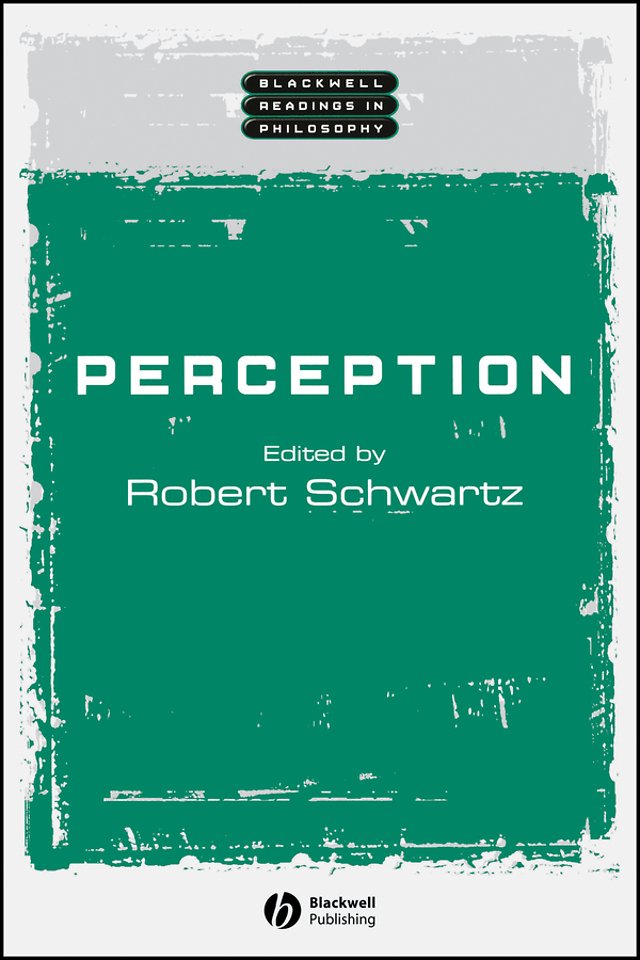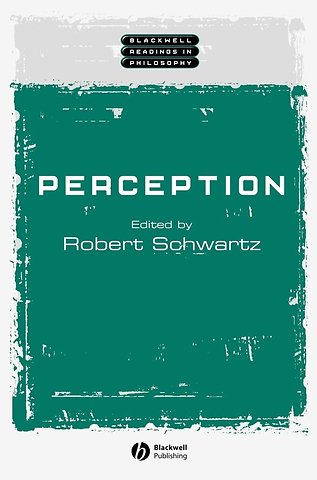Perception
Samenvatting
Perception presents classic essays on the conceptual and theoretical problems in the study of vision. In a style that is accessible to the non–expert, the volume lays out core issues in the theory of vision and then sets up a dialogue on the topics among philosophers and psychologists, past and present.
Offers an accessible introduction to perception through key readings.
Presents a dialogue among philosophers and psychologists on the science of perception.
Contains a comprehensive introduction and provides suggestions for further reading.
Useful for readers interested in philosophy, psychology, cognitive science, computer vision, and visual science.
Specificaties
Inhoudsopgave
<p>Introduction..</p>
<p>Part I: Historical Background.</p>
<p>Introduction.</p>
<p>1. From On The Soul (Aristotle).</p>
<p>2. From An Essay Towards A New Theory Of Vision (George Berkeley).</p>
<p>3. From Essays On The Intellectual Powers Of Man (Thomas Reid).</p>
<p>4. From The Philosophy Of The Enlightenment (Ernst Cassirer).</p>
<p>5. From Elements Of Physiology (Johannes Müller).</p>
<p>6. From Treatise On Physiological Optics (Hermann Von Helmholtz).</p>
<p>7. From Principles Of Gestalt Psychology (Kurt Koffka).</p>
<p>Part II: The Senses.</p>
<p>Introduction.</p>
<p>8. From The Senses Considered As Perceptual Systems And The Ecological Approach To Visual Perception (James J. Gibson).</p>
<p>9. From In And Out Of The Black Box (David W. Hamlyn).</p>
<p>10. From Perception And Cognition (John Heil).</p>
<p>11. From The Will (Brian O Shaughnessy).</p>
<p>12. From The Analysis Of Sensation (Ernst Mach).</p>
<p>13. From Molyneux s Question (Michael J. Morgan).</p>
<p>14. Molyneux s Question (Gareth Evans).</p>
<p>Part III: Direct Versus Indirect Theories of Perception.</p>
<p>Introduction.</p>
<p>15. A Theory Of Direct Perception And From The Ecological Approach To Perception (James J. Gibson).</p>
<p>16. How Direct Is Visual Perception? (Jerry A. Fodor and Zenon W. Pylyshyn).</p>
<p>17. Inference In Perception (Irvin Rock).</p>
<p>18. Is The Visual System As Smart As It Looks? (Patricia Smith Churchland).</p>
<p>19. Tacit Assumptions In The Computational Study Of Vision (Simon Ullman).</p>
<p>20. Why Do Things Look As They Do? (William Epstein).</p>
<p>Part IV: Perception and Conception.</p>
<p>Introduction.</p>
<p>21. Seeing, Believing, And Knowing (Fred Dretske).</p>
<p>22. From Wittgenstein (Robert Fogelin).</p>
<p>23. From Patterns Of Discovery (Norwood Russell Hanson).</p>
<p>24. Analogue Content (Christopher Peacocke).</p>
<p>25. Where Perceiving Ends And Thinking Begins (Elizabeth S. Spelke).</p>
<p>26. Seeing Is Believing Or Is It? (Daniel C. Dennett).</p>
<p>Index.</p>

